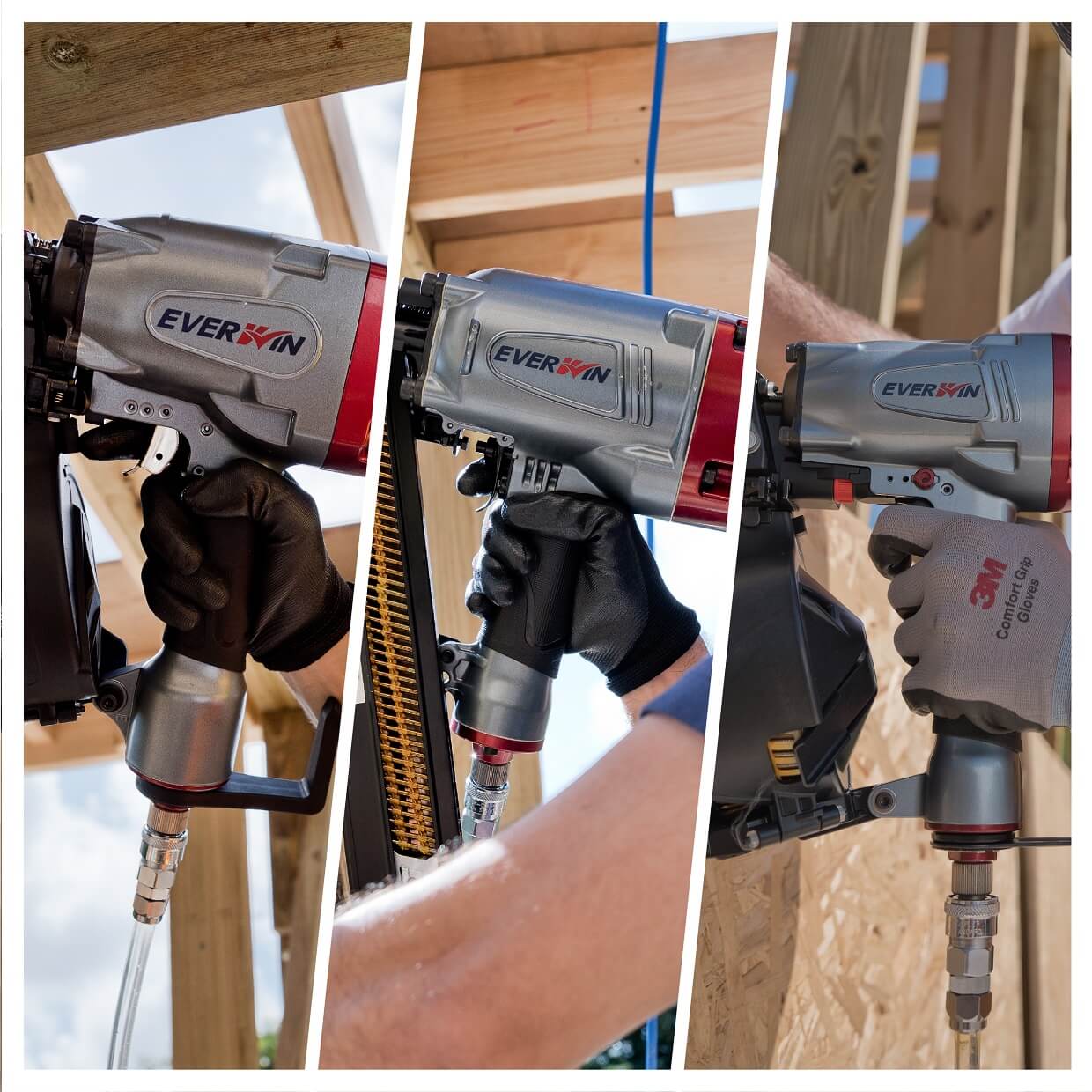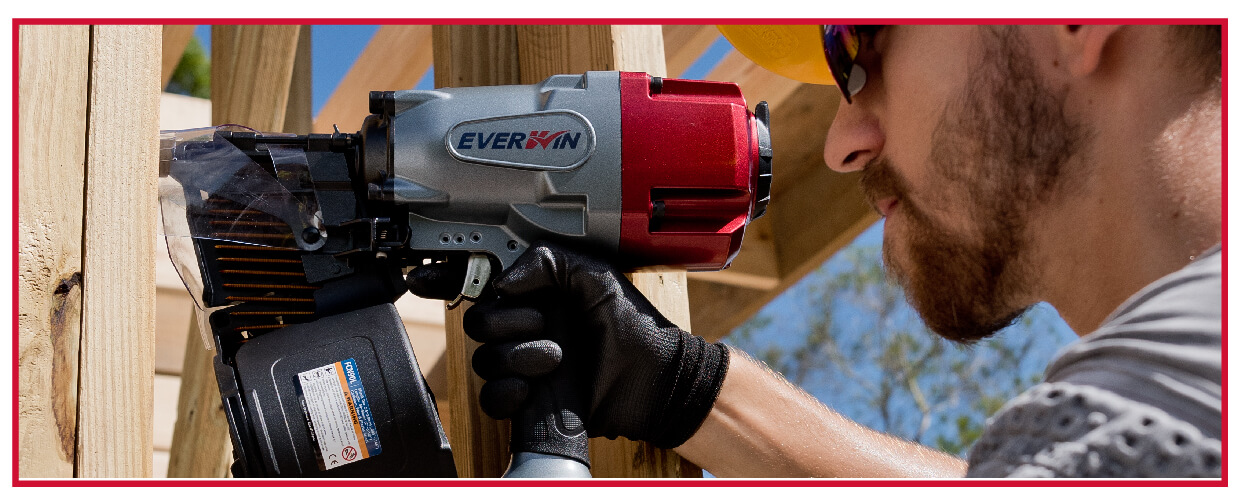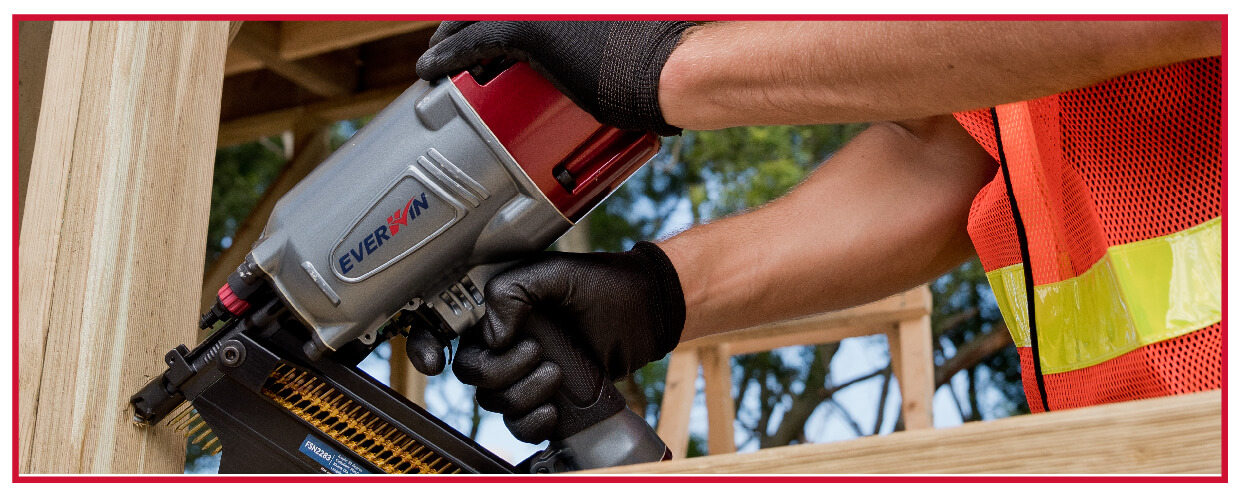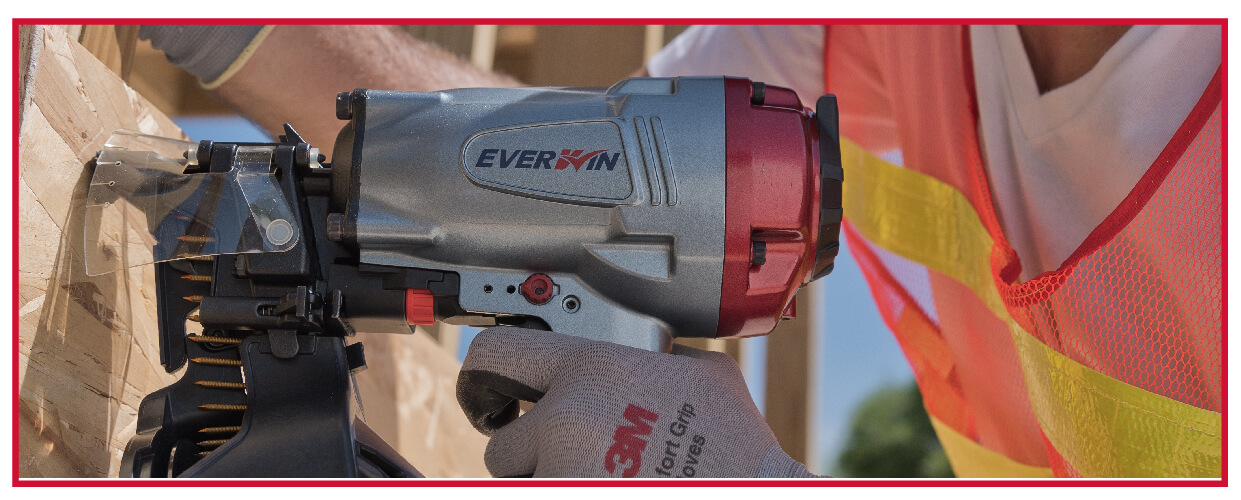
Trigger is the Key to Purchase Nail Guns
The right trigger can increase productivity and safety on the job site so before you purchase a pneumatic tool consider which trigger feature benefits you the most. Most pneumatic nailers /staplers require two basic controls: the trigger and the contact tip. The contact tip (safety tip, workpiece contact, nose, yoke) is fixed at the end of the muzzle and must be depressed before the fastener can be discharged.
The trigger mechanism depends on:
- The order in which the controls (the trigger and contact tip) are activated.
- If the trigger can be held in the squeezed position to discharge multiple nails OR the trigger must be released and then activated again for each proceeding fastener.
Understanding the trigger mechanisms and firing types will prevent purchasing errors and most importantly promote safety at workplace. Consider the following:
Full Sequential Trigger

Full sequential trigger is considered the safest trigger mechanism because it will only discharge when the controls are activated in a specific order. First, the contact tip must be pressed into the work surface. Second, the trigger must be squeezed to discharge the fastener. Now to release the second fastener, both the contact tip and the trigger must be released then activated again in that order. Full sequential is recommended for construction settings to ensure safety of a user moving about the worksite with the tool in hand. where fine finish and precise nail placement is crucial. The feature can be seen in the full-sequential trigger firing EVERWIN FCN90LB-ST and EVERWIN SCN66B-ST .
Contact “Bump Fire” Trigger

Contact actuation trigger discharges when the safety tip and trigger are activated in any order. The safety tip can be pressed first and then the trigger squeezed, or the trigger can be squeezed first and then the contact tip engaged. Commonly called “bump firing”, the operator can keep the trigger squeezed and new fasteners will be discharged every time the contact tip is pressed or “bumped”. This allows for a rapid-fire method. Contact “Bump Fire” trigger is ideal for large-scale projects and industrial worksites. Typically used by properly trained and well experienced workers in factories. Popularly used for pallet making. However, it is also a desired feature on job sites with flat surfaces such as flooring, roofing, and decking. Some examples of the contact trigger feature are used in EVERWIN FCN90B-CT and EVERWIN SCN65-CT and EVERWIN FSN3490-CT .
Single-Sequential Trigger
Single-Sequential Trigger, like full sequential trigger, discharges only when the operating controls are activated in proper order. First, the contact tip must be pressed into the work surface. Second, the trigger must be squeezed to discharge the fastener. Now to release the second fastener, only the trigger must be released then activated again. With single-sequential trigger you can drag the contact tip along the work surface and discharge the fasteners. “bump firing”. The EVERWIN MCN40B uses single-sequential feature. Again, this is recommended on construction sites for safety of user moving with the tool in hand. As well as interior finish where fine finish and precision is critical.
Single Actuation Trigger
Single Actuation Trigger, like contact trigger https://ciccre.uvt.ro/, discharges the fastener when the contact tip and trigger are activated in any order. The contact tip can be activated first and then squeeze the trigger, or the trigger can be squeezed and then the safety contact tip engaged. Now, to release the second fastener, only the trigger must be released then activated again. Although sometimes referred as single-sequential trigger, the difference is single actuation can “bump fire” the first nail in that the safety contact tip is engaged first.
Selective Actuation Trigger

Selective Actuation Trigger is a feature that allows selection of two or more of actuation trigger systems. The PTIA Award-Winning EVERWIN SCN51 has selective trigger to adjust between contact and sequential fire.
Conclusion
Pay special attention to the tool label and manual for manufacturer-specific trigger names and operating instructions. If your workplace uses multiple types of triggers, practice color coding to identify the different triggers. The EVERWIN lineup traditionally identifies full-sequential actuation with a grey/ silver trigger, contact actuation with a black trigger, and single-sequential actuation also with a grey/ silver trigger. The selective actuation feature has a red switch fixed above the trigger to easily adjust to desired system.
